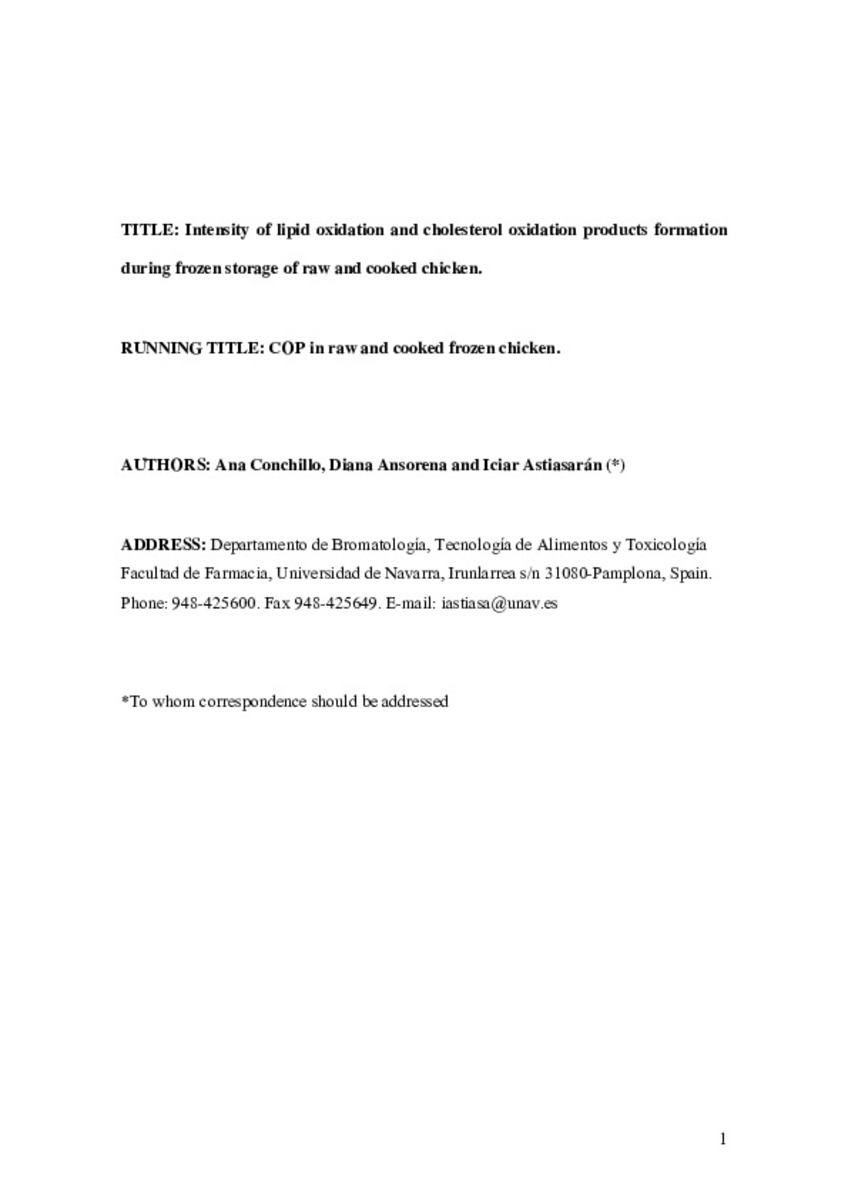Intensity of lipid oxidation and formation of cholesterol oxidation products during frozen storage of raw and cooked chicken
Palabras clave :
Chicken meat
TBARS
Oxysterol
Freezing
Vacuum packaging
Fecha de publicación :
2004
Editorial :
Wiley-Blackwell
Cita:
Conchillo A, Ansorena D, Astiasarán I. Intensity of lipid oxidation and formation of cholesterol oxidation products during frozen storage of raw and cooked chicken. J Sci Food Agric 2005;85(1):141-146.
Aparece en las colecciones:
Estadísticas e impacto
0 citas en

0 citas en

Los ítems de Dadun están protegidos por copyright, con todos los derechos reservados, a menos que se indique lo contrario.











